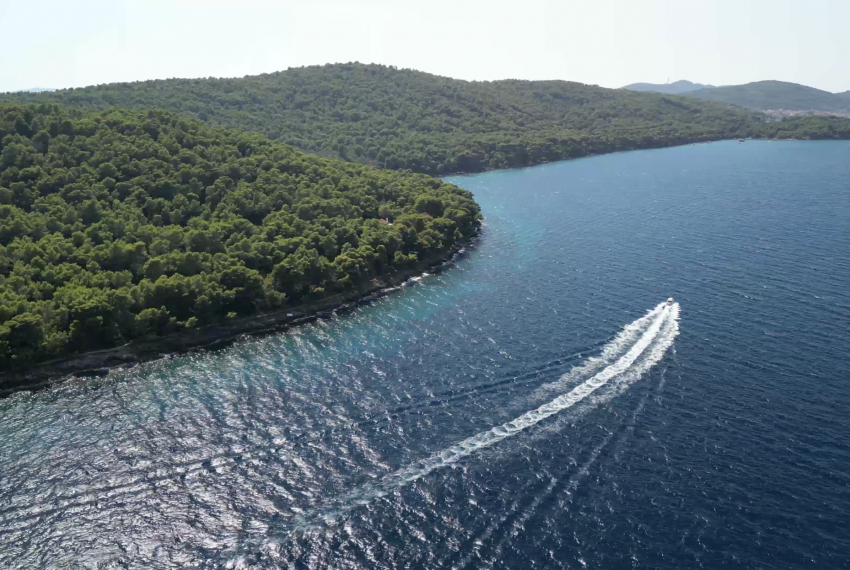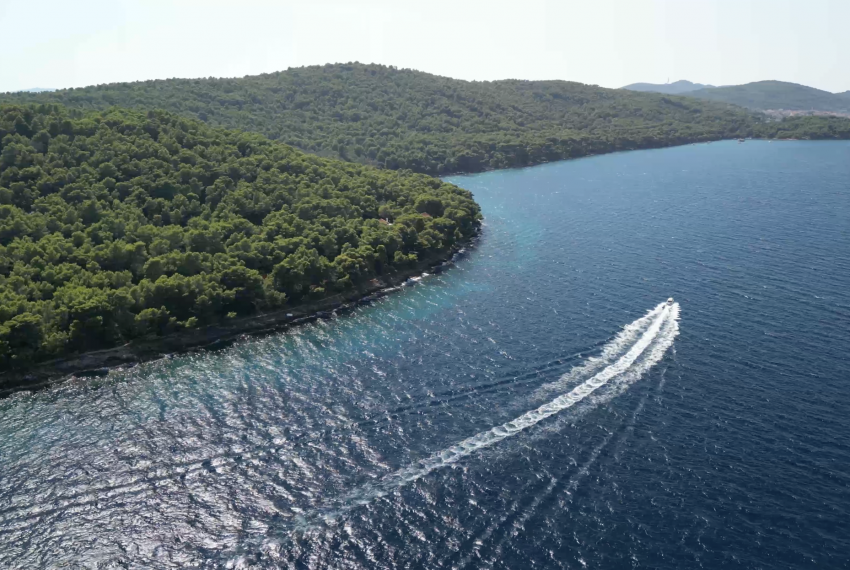Ugljan - The green island
Ugljan Island, whose name is connected with the island’s one of the main products - olive oil.
However, in ancient times was recognized by the name Olio, which is also attached to oil. After some time, the name changed to Uljan, and the Croats added the letter “G” (for some reason) so today we have the name - Ugljan.
Known as the "Green Island," belongs to the archipelago of Zadar. We can say that Ugljan is a Zadar’s garden. Such a peaceful place, famous for its lush vegetation, scenic coastline, and charming villages.
Not that populated and not overcrowded by tourists, which is great if you are a nature and peace seeker. At the moment, there is in total of not more than 6 500 inhabitants. The highest elevation on the entire island is 286 m, and the point name is Šćah (Sh-ch-aah).
We’ll cover how to get to Ugljan from Zadar, the best things to do on the island, and why exploring by bike might just be the best way to see it all.
History of Ugljan Island
The island of Ugljan was first inhabited by the Liburnians in the 4th century BC, who built settlements on hills like Čelinjak, Kuranj, and Sveti Mihovil. In the 1st century BC, the Romans colonized Ugljan and established rural villas (villae rusticae) as residences and farm management centers, with notable remains found at Gospodska gomila and Stivan in Muline.
During the Early Middle Ages, Croats settled on the island, evidenced by stone artifacts and place names. Zadar's commune controlled much of Ugljan’s land, assigning it to aristocratic families who built summer residences.
In the Middle Ages, Ugljan came under Venetian rule, followed by a brief period of French control in the early 19th century and then Austrian rule until the end of the Austro-Hungarian Monarchy.
Since 1918, Ugljan has been part of Croatia.
The replica of the oil mill
In the village of Muline on Ugljan Island, you can discover a faithful replica of an ancient olive oil mill dating back to the 1st century AD. This reconstruction stands adjacent to the original archaeological site, which includes remnants of a villa rustica, a late antique mausoleum, and an early Christian basilica.
The ancient oil mill was a significant center for producing the renowned Liburnian oil, highly esteemed throughout the Roman Empire. Constructed in 2007 as part of the "Adventure Island" project, aiming to preserve and showcase the island's rich olive-growing heritage. This initiative also involved developing and marking olive and cycling paths, as well as establishing rest areas and lookouts in the island's hinterland.
Ždrelac Bridge
Ugljan and Pašman, are two islands closely connected both geographically and culturally. Separated by only a narrow, scenic channel called the Ždrelac, and since 1973, they’ve been linked by the Ždrelac Bridge, which stretches over this channel, making it easy to travel between the two islands by road.
The strait between Ugljan and Pašman was originally dug, in 1883 under Austro-Hungarian rule, measuring 10 meters wide and about 3 meters deep. But, while the bridge construction was in the process, the strait was widened and deepened.
The bridge connection has tied the bond between Ugljan and Pašman communities, making them feel almost like a single, larger island.
Together, they offer travelers a seamless blend of natural beauty, historical sites, and a slower pace of life typical for the Adriatic islands.
Flora and fauna - the green island
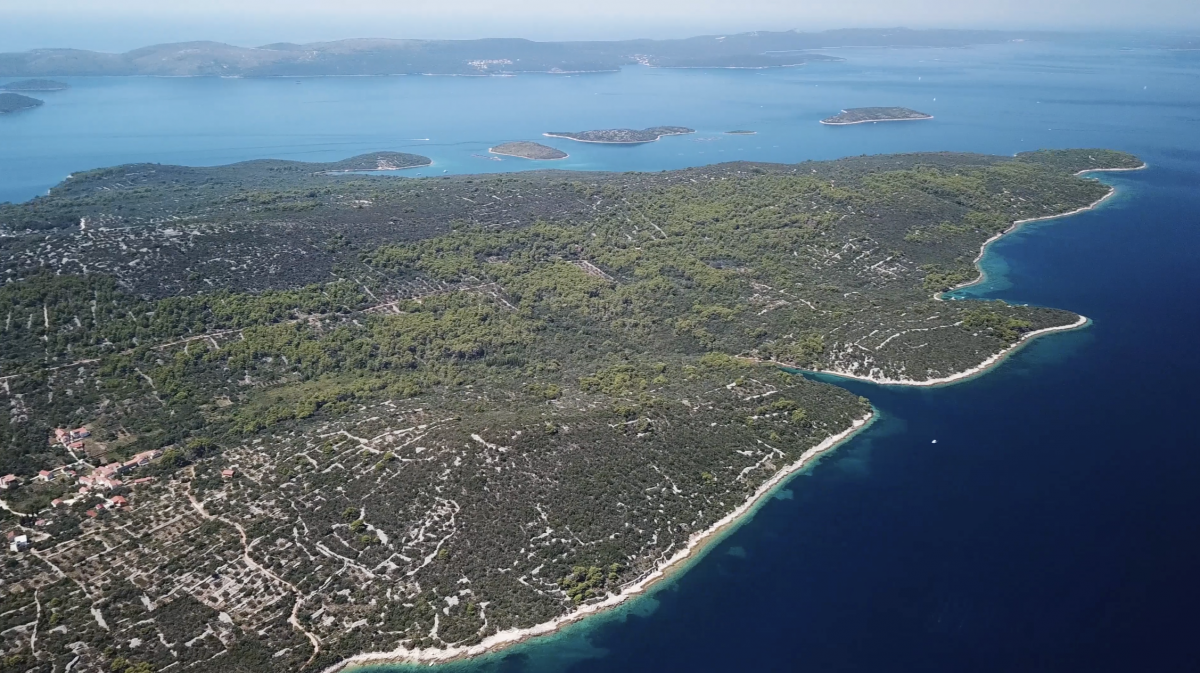
The island of Ugljan is a lush showcase of Mediterranean flora. Vegetation flourishes with timeless Mediterranean staples like the robust holm oak, pine trees, cypresses, and the dense high macchia shrubland.
Yet, what truly defines Ugljan’s landscape are the thousands of olive trees that stretch across the island, giving it a character that feels both ancient and deeply rooted.
Among the rolling hills and scenic slopes, you’ll find a tapestry of olive and fig trees, thriving vineyards, and aromatic bushes that infuse the air with a distinct Mediterranean essence.
It’s a place where the very vegetation tells a story of tradition and resilience, making Ugljan’s nature not just a backdrop but a vital part of the island’s identity.
Getting to Ugljan from Zadar
Getting to Ugljan is simple, and the journey itself is part of the adventure. Here’s how to make the trip from Zadar to Ugljan Island.
By ferry
The easiest and most popular way to get to Ugljan from Zadar is by ferry. The ferry runs regularly throughout the day, especially during the summer season, with the ride lasting about 25 minutes. Ferries depart from Zadar’s Gaženica port and arrive at Preko, Ugljan’s main port town.
Tickets can be purchased at the ferry terminal in Zadar or online through the ferry company Jadrolinija’s website. Prices are generally affordable, and there are discounts for children and groups.
Ferries operate frequently, with more trips scheduled during the summer months. It’s a good idea to check the latest schedule, as it can vary by season.
Taking your car
If you’d like to explore Ugljan with a car, the ferry can accommodate vehicles.
However, during peak season, it’s often faster and more convenient to travel as a pedestrian and rent a bike or scooter once on the island.
Once you arrive at Preko, you’re just minutes away from beautiful beaches, historic landmarks, and scenic trails.
Private boat or water taxi
For a more personalized trip, consider hiring a private boat or water taxi. Although this option is pricier than the ferry, it provides a faster, more flexible way to reach Ugljan.
Private boat rentals are popular among visitors who want to explore multiple islands in the Zadar archipelago at their own pace.
What to do in Ugljan Island?
Ugljan may be known for its laid-back vibe, but it’s packed with things to see and do. Here are some top activities that showcase the island’s beauty and cultural heritage.
Turkija - Šćah hiking trail
It takes 1 hour and 30 minutes to complete this moderately challenging hiking route. Enthusiasts can take the hike all year round, even with their dogs. The path from Turkija village is marked, and once you reach the peak you will admit that it is worth it.
Be careful if hiking during bad weather conditions. It can be demanding while sun exposure is high, so bring sunglasses, a cap, and a bottle of water.
Preko - olive paths and lookout points
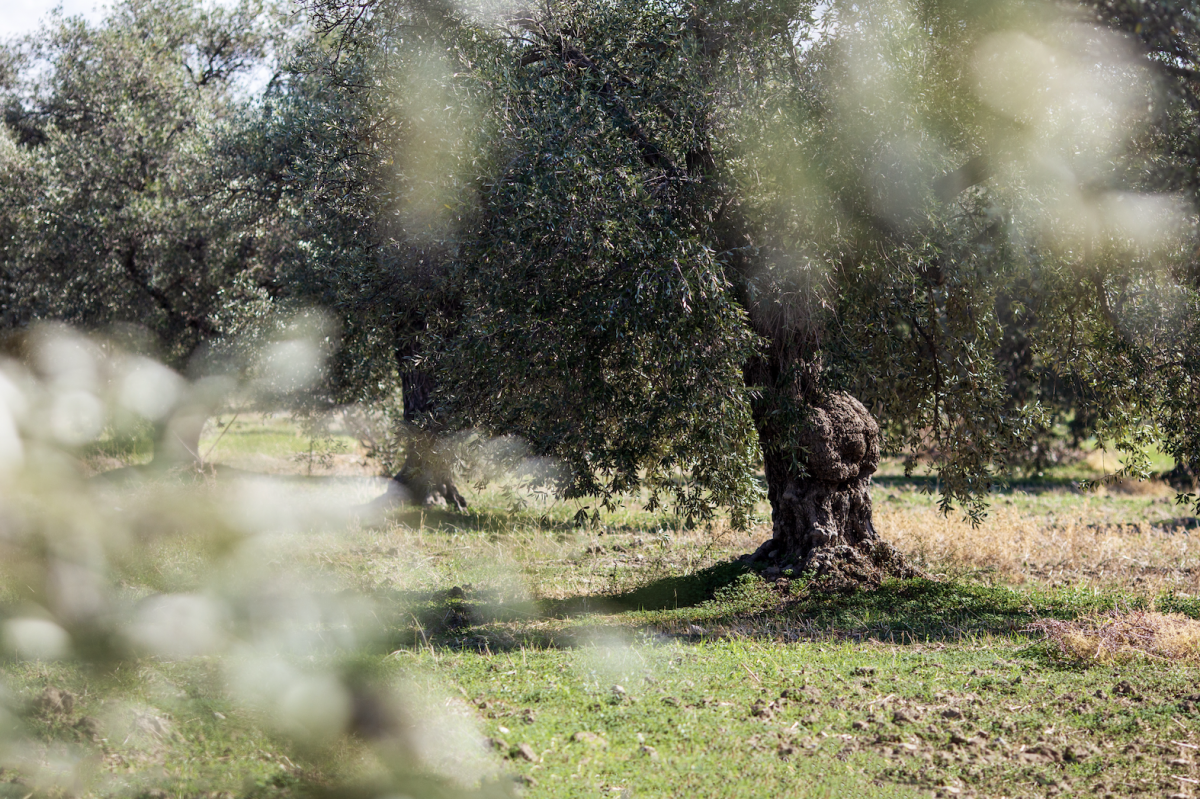
Preko is Ugljan’s main port town and a lovely place to start your island adventure. The town has a beautiful waterfront lined with cafes, restaurants, and shops.
Wander through its narrow streets to discover charming stone houses and local boutiques, or visit Our Lady of the Rosary Church for a glimpse into the island’s spiritual heritage.
Ugljan’s beaches
Ugljan’s coastline is dotted with stunning beaches, each offering clear waters and a tranquil atmosphere.
Mala Sabuša Beach in the town of Kali is one of the most popular, featuring crystal-clear waters perfect for swimming and snorkeling.
For a quieter spot, check out Lučina Bay, a small cove surrounded by lush greenery, or head to Batalaza Bay, known for its beautiful sunsets.
Fortress of St. Michael
One of the island's must-see attractions is the Fortress of St. Michael (Fort St. Mihovil), a 13th-century fortress perched on a hill overlooking the island.
A hike up to the fortress is rewarded with panoramic views of Ugljan, the Zadar archipelago, and on clear days, even the distant Velebit mountains.
The fortress is a fantastic spot for photography, so don’t forget your camera!
Ugljan’s Olive Groves
Ugljan is a paradise for olive oil enthusiasts. The island has a long tradition of olive cultivation, and you can visit several family-owned olive oil producers to learn about the process and sample their products.
The small village of Ugljan itself is home to many of these groves, and guided tours often include tastings and a walk through the ancient olive trees.
Don’t miss: The annual olive festival in October, where local producers gather to celebrate the island’s rich agricultural heritage.
Try local cuisine
Ugljan has a variety of traditional Croatian restaurants where you can savor fresh seafood, local cheeses, and Dalmatian dishes.
Head to a konoba (traditional Croatian tavern) in Preko or the village of Kali for an authentic dining experience. Must-try dishes include grilled sardines, black risotto, and octopus salad.
Galovac Island
Situated just 80 meters from Preko (Preko means “across”). The islet's sandy beach and tranquil environment make it a favored spot for swimming and relaxation.
Despite its small size, Galovac (Školjić) has an interesting historical background. The island is home to a Franciscan monastery that dates back to the 15th century. This monastery was founded by monks seeking solitude and a place to worship away from the bustling mainland.
To this day, the monastery stands as a testament to the island’s spiritual significance and historical heritage. It remains in operation, with monks maintaining the grounds and welcoming respectful visitors who wish to explore its tranquil setting.
Are there bikes on Ugljan?
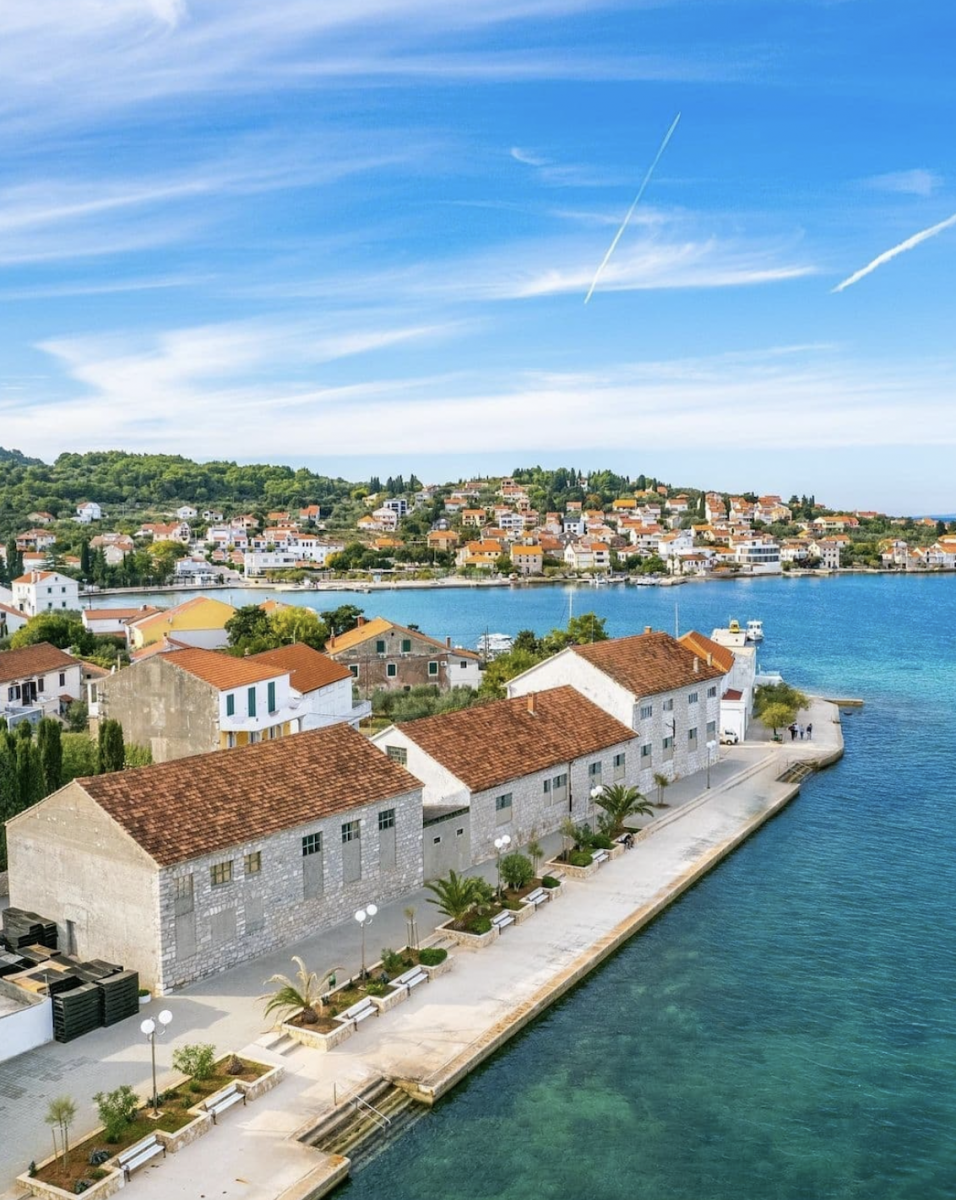
Photo credit: Zoran Bakic
Yes, and cycling around Ugljan is one of the best ways to see the island!
Bike rentals are available in Preko, and rates are affordable, typically ranging from €10-€15 per day. You can rent mountain bikes or hybrid bikes, which are ideal for the island’s varied terrain.
Some rental shops also offer electric bikes, perfect if you want an extra boost on those uphill paths.
Where to rent:
Look for bike rental shops near the ferry port in Preko or check with your hotel or guesthouse, as many offer rentals directly to guests.
Ugljan has a mix of paved roads and off-road trails. The main road connecting the villages along the coast is bike-friendly, and dedicated trails lead to popular spots like St. Michael’s Fortress and various beaches.
Top cycling routes on Ugljan
Preko to Kali route
This easy route takes you from Preko to the charming fishing village of Kali. It’s a scenic ride along the coast, with views of the Adriatic and access to beaches where you can stop for a swim.
Fortress of St. Michael trail
For a more challenging ride, head to the trail that leads up to the Fortress of St. Michael. This route is steeper but rewarding, with breathtaking views of the surrounding islands and mainland Croatia.
Round route
This circular route passes through the picturesque villages of Ugljan, Lukoran, and Sutomišćica. Along the way, you’ll find olive groves, ancient ruins, and quiet beaches perfect for a rest break.
Bring plenty of water, as the island can get quite hot in the summer. Make sure to lock your bike when parked, especially in popular areas, and respect local traffic rules.
When cycling around Ugljan, remember that the island is shared with pedestrians, other cyclists, and cars. Stick to the designated paths, wear a helmet, and be cautious on narrow village roads.
Most locals are friendly to cyclists, but it’s good practice to ride carefully, especially in busier areas.
Why is Ugljan worth visiting?
Whether you’re drawn to Ugljan for its beautiful beaches, historic sites, or cycling adventures, this Croatian island promises a memorable experience for every type of traveler.
It’s close enough to Zadar for a day trip but charming enough to warrant a longer stay.
With easy access from Zadar, plenty of things to see and do, and a variety of ways to explore, Ugljan truly lives up to its reputation as the “Green Island” of Croatia. So, pack your bags, hop on a ferry, and get ready to discover the beauty of Ugljan.
If looking for places to stay on Ugljan Island, we recommend considering holiday houses. This allows you firsthand experience of local life.





